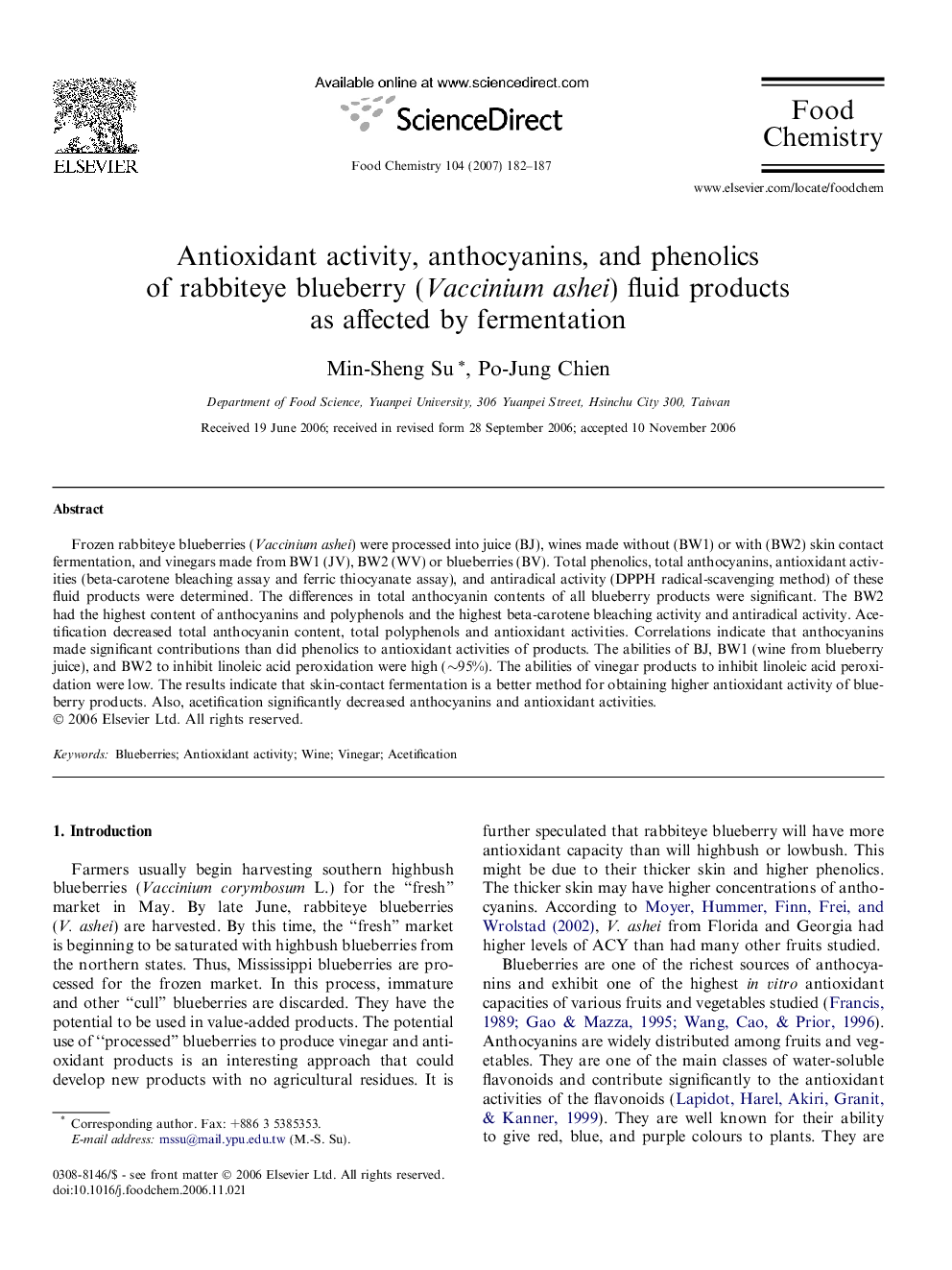| Article ID | Journal | Published Year | Pages | File Type |
|---|---|---|---|---|
| 1190184 | Food Chemistry | 2007 | 6 Pages |
Frozen rabbiteye blueberries (Vaccinium ashei) were processed into juice (BJ), wines made without (BW1) or with (BW2) skin contact fermentation, and vinegars made from BW1 (JV), BW2 (WV) or blueberries (BV). Total phenolics, total anthocyanins, antioxidant activities (beta-carotene bleaching assay and ferric thiocyanate assay), and antiradical activity (DPPH radical-scavenging method) of these fluid products were determined. The differences in total anthocyanin contents of all blueberry products were significant. The BW2 had the highest content of anthocyanins and polyphenols and the highest beta-carotene bleaching activity and antiradical activity. Acetification decreased total anthocyanin content, total polyphenols and antioxidant activities. Correlations indicate that anthocyanins made significant contributions than did phenolics to antioxidant activities of products. The abilities of BJ, BW1 (wine from blueberry juice), and BW2 to inhibit linoleic acid peroxidation were high (∼95%). The abilities of vinegar products to inhibit linoleic acid peroxidation were low. The results indicate that skin-contact fermentation is a better method for obtaining higher antioxidant activity of blueberry products. Also, acetification significantly decreased anthocyanins and antioxidant activities.
